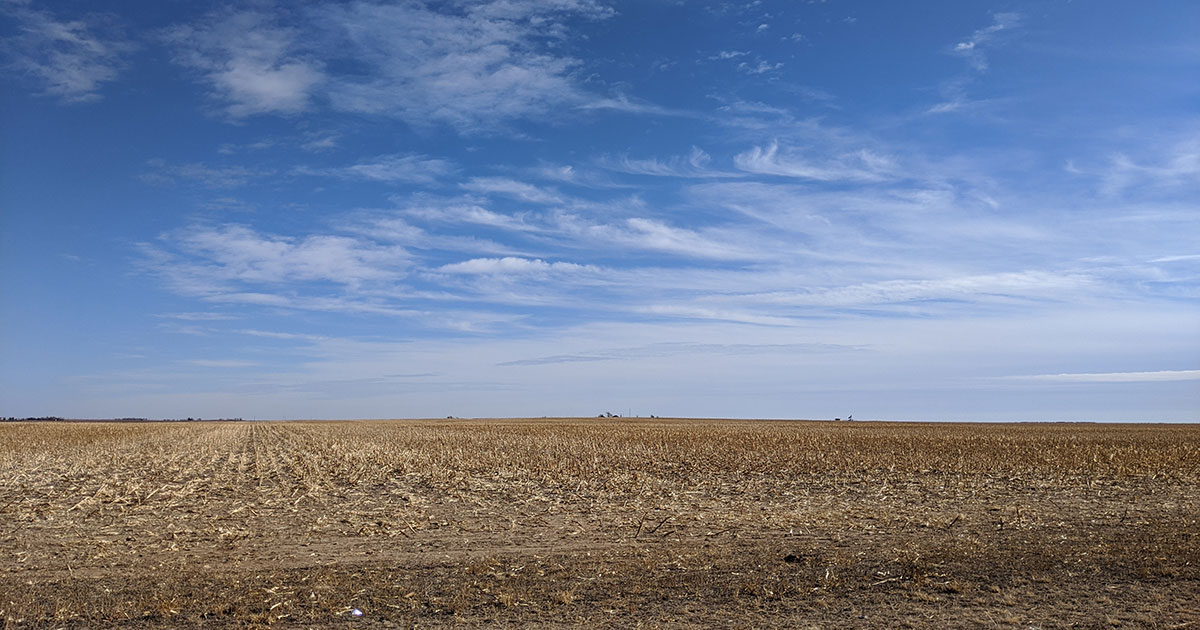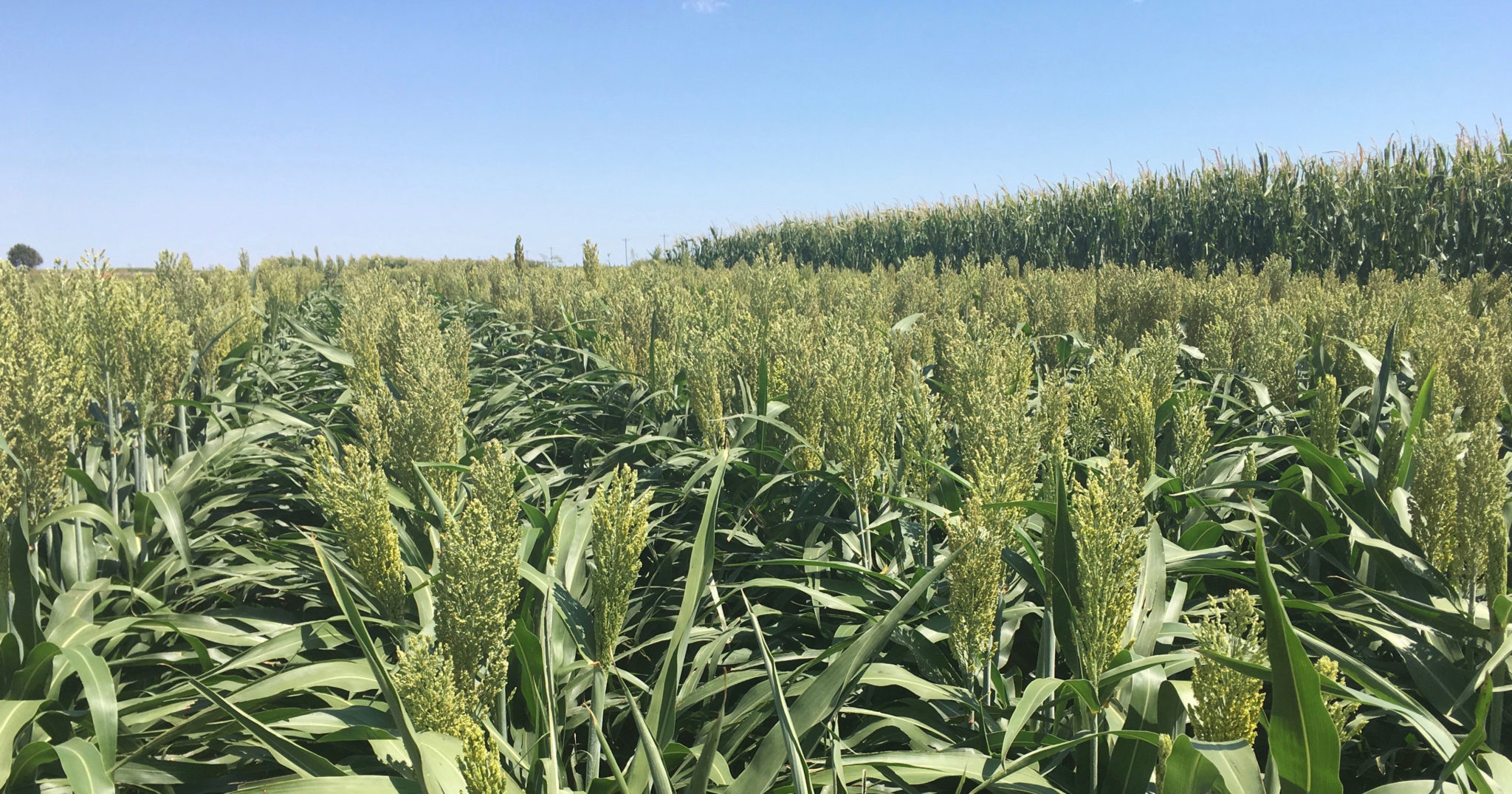Four-year project delivers science-based solutions for managing Ogallala Aquifer By Anne Manning Published July 6, 2020
Stretching 174,000 square miles across the High Plains, bringing life to fields of corn, cotton and wheat, lies the vast geologic resource known as the Ogallala Aquifer.
The largest freshwater aquifer in the world, the Ogallala has been an entire generation’s primary source for agricultural and public groundwater in eastern Colorado and six Great Plains states. Ninety percent of its pumped water is used for irrigation, making a fifth of the annual U.S. agricultural harvest possible, and helping support 30% of livestock produced in the nation.
Over the past eight decades, intensive reliance on this precious natural resource to support irrigated agriculture has led to crisis levels of water scarcity and water quality declines in many parts, threatening the very future of U.S. agriculture and the livelihoods of thousands of crop producers. Farmers, ranchers, scientists, community organizations and policymakers must work together to guide and implement strategies that will extend the life of the aquifer.
Since 2016, a Colorado State University-led consortium of eight western universities and the USDA-Agricultural Research Service have worked tirelessly to address these very challenges. The team of close to 100 experts, students and partners was formed through a $10 million grant from the USDA’s National Institute of Food and Agriculture Water for Agriculture Challenge program, under the leadership of two CSU faculty members: Meagan Schipanski, associate professor in the Department of Soil and Crop Sciences, and Reagan Waskom, professor in the same department and director of the Colorado Water Center.
The Ogallala Water Coordinated Agriculture Project includes CSU, University of Nebraska-Lincoln, Kansas State University, Oklahoma State University, New Mexico State University, Texas Tech University, West Texas A&M University, Texas A&M AgriLife Extension, and the USDA-Agricultural Research Service. Through the past several years, the project has integrated research, extension and thoughtful evaluation of social policies and economic strategies to make science-based recommendations for extending the life of the Ogallala Aquifer for generations to come and preparing for transitions away from irrigation when and where the aquifer depletes.
Most importantly, the USDA-funded work was intended to foster engagement with the people most affected by the declining water supply – the farmers and producers who rely on it and who, above all others, are dedicated to saving it.
“Over these past four years, we have focused not just on the science, but on the impact of that science, and on the network our project has helped foster,” said Schipanski, who recently led the procurement of a no-cost, fifth-year extension of the grant to continue the work into 2021. “We’ve become a trusted actor in this multi-state space, to lead these conversations.”
Expanding knowledge
Supported by the USDA grant, the team has developed a large body of research on critical topics related to the Ogallala Aquifer. These include optimizing water use through advanced cropping and irrigation management in both dryland and irrigated production systems; investigating socioeconomic factors that influence water use and decision-making; assessing potential impacts of policy and farm-level practices on regional outcomes; and developing data-based support tools and technologies that are both effective and user-friendly.
As an example of new scientific insight that could inform management practices, a recent paper co-authored by researchers from Stanford University, CSU, Kansas State University, West Texas A&M University and others, outlines the scale of threatened areas in the aquifer projected through 2100. While studies often assume that irrigated farming will transition to dryland farming once portions of the aquifer dry up, the researchers found that 13% of the land projected for irrigation losses is not suitable for such a transition and will likely go to pasture or other uses.
Others on the team have uncovered critical connections between soil health and water conservation in the Ogallala region, with a focus on soil organic matter accrual and the state of the soil microbiome. The expected transition to more dryland production will even further increase crops’ reliance on soil health, the researchers say.
Still, others have provided technical insights into deficit irrigation management of corn crops from across the Ogallala Aquifer region. Deficit irrigation is a watering strategy in which less water than a crop might fully use is applied, and water volume is timed to match the crop’s peak needs.

Economic tradeoffs, incentives
A large focus area for the team has centered on the economic, social and behavioral ramifications of different management strategies and policies for the region. Particularly important has been a deep assessment of the attitudes and motivations of the farmers in the region, and how those might differ across ages and generations.
Jordan Suter, CSU associate professor in the Department of Agricultural and Resource Economics, has been among those working in the area of understanding the decision-making of agricultural producers. His work — in collaboration with others in his department as well as researchers in the Department of Civil and Environmental Engineering — has undertaken the complex endeavor of combining spatial, hydrologic and economic models to support new insights into the delicate tradeoffs of different water policies.
Recently, Suter co-authored research on longstanding water conservation programs like the Conservation Reserve Enhancement Program, a federally funded collaboration with state and local water districts that incentivizes agricultural producers to retire groundwater wells in the interest of preserving the aquifer. In their recent analysis, Suter and colleagues found that the program, which pays farmers to take their wells offline, attracts participation primarily from wells that irrigate lower-quality land, in areas of the aquifer where less water is available. In other words, the program might not be as effective as hoped and could benefit from some restructuring of the incentives offered.
Among the most prominent themes of Suter and colleagues’ work is the need to balance short- and long-run outcomes of different management strategies. “I think most people are prepared to make sacrifices to provide for the long run, but how much and what is the best course of action is ultimately in their hands to decide,” he said. “Hopefully we can help provide empirical evidence to allow for informed decisions.”
Taking action now
Equally as important to answering research questions has been the strengthening of extension activities and programs to help water users take action now, whether that means changing how they approach irrigation or vetting technologies to help them manage water more sustainably.
An example of such work has been the growth and success of the Master Irrigator Program, which originated in the North Plains Groundwater Conservation District in Texas in 2016, was recently adapted and launched earlier this year in Colorado, and is now moving into Oklahoma.
The expansion of Master Irrigator programs was catalyzed by the Ogallala project’s help in coordinating an eight-state Ogallala Summit in 2018 with the Kansas Water Office that identified actionable, replicable activities for the benefit of the region. Colorado’s Master Irrigator program is a four-day, intensive educational course available for Republican River Basin irrigators and farm managers, offering training in advanced conservation- and efficiency-orientated irrigation practices.
Participants in the inaugural Colorado Master Irrigator Program, which took place in February and March, manage more than 20,000 acres within all eight Republican River Basin counties in northeastern Colorado.

With support from the Ogallala team, the locally run Colorado Master Irrigator program has secured funding from the Colorado Water Conservation Board to continue for at least another two years, said Amy Kremen, the Ogallala grant program’s project manager. In addition to supporting development and delivery of the program, the funding makes possible participation stipends of up to $2,000 to course graduates who agree to share how they’ve used the information they’ve learned.
Community engagement and the satisfaction of participants in year one of the Colorado Master Irrigator program was very robust, Kremen said. “By laying out a smorgasbord of technologies and strategies for water management and providing a forum for practical discussion on potential benefits as well as costs and limitations, it puts farmers in the driver’s seat,” she said.
In keeping with the theme of advancing technologies, the Ogallala project has also supported the growth of a Nebraska-based program called TAPS, or Testing Ag Performance Solutions. In 2017, Ogallala team collaborators based at the University of Nebraska-Lincoln launched a series of farm-management competitions that provide a no-risk environment for farmers to try out agricultural technologies to produce a crop. As a result of the team’s connections, a new TAPS program was launched in 2019 in cooperation with Oklahoma State University in the Oklahoma Panhandle. Over the next three years, a grant from the USDA Natural Resource Conservation Service will support further development of TAPS programs and explore possibilities for expansion in Colorado and Kansas.
“The TAPS program has been this incredible, impactful integration of industry, research and extension,” Schipanski said.
Ogallala Aquifer Summit
This and other successes from the Ogallala Water Coordinated Agriculture Project are set to be shared with over 200 partners at the Ogallala Aquifer Summit, to take place in early 2021 in Amarillo, Texas. The biennial event, postponed from earlier this spring due to the COVID-19 pandemic, is themed “Tackling Tough Questions.”